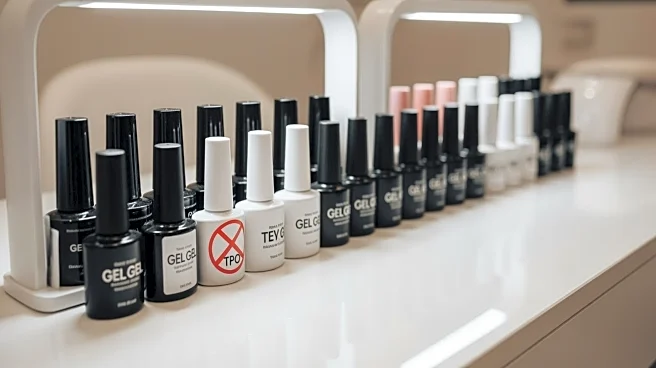What's Happening?
The European Union has banned the use of trimethylbenzoyl diphenylphosphine oxide (TPO) in gel nail polishes, effective September 1. TPO, a photoinitiator used for curing gel nail polishes, has been classified as 'carcinogenic, mutagenic, or toxic for reproduction'
based on animal studies. This ban prohibits the sale and use of gel polishes containing TPO across the EU, leading to confusion and misinformation about the safety of gel nail polishes. Despite the ban, gel nail polishes themselves are not prohibited, only those containing TPO. The EU's decision is based on precautionary measures, as the exposure levels in humans differ significantly from those in animal studies.
Why It's Important?
The ban on TPO in gel nail polishes highlights the EU's precautionary approach to chemical regulation, which contrasts with the risk-based approach in the United States. This decision may influence the beauty industry globally, as manufacturers may need to reformulate products to comply with EU standards. The ban could lead to increased demand for TPO-free alternatives, impacting both consumers and nail salons. While the U.S. has not banned TPO, the EU's decision may prompt discussions about chemical safety in cosmetics and influence future regulatory actions.
What's Next?
Manufacturers and nail salons in the EU will need to adapt to the ban by reformulating products and disposing of existing stock containing TPO. The beauty industry may see a shift towards TPO-free gel polishes, with brands potentially reformulating to meet EU standards. In the U.S., the FDA may consider the EU's decision but is unlikely to implement a similar ban without further evidence of harm to humans. Consumers may become more cautious about the ingredients in beauty products, leading to increased demand for safer alternatives.
Beyond the Headlines
The ban raises questions about the balance between precautionary measures and scientific evidence in regulatory decisions. It also highlights the differences in chemical regulation between the EU and the U.S., which may affect international trade and consumer perceptions of product safety. The beauty industry may face challenges in ensuring product safety while maintaining performance and consumer satisfaction.
















